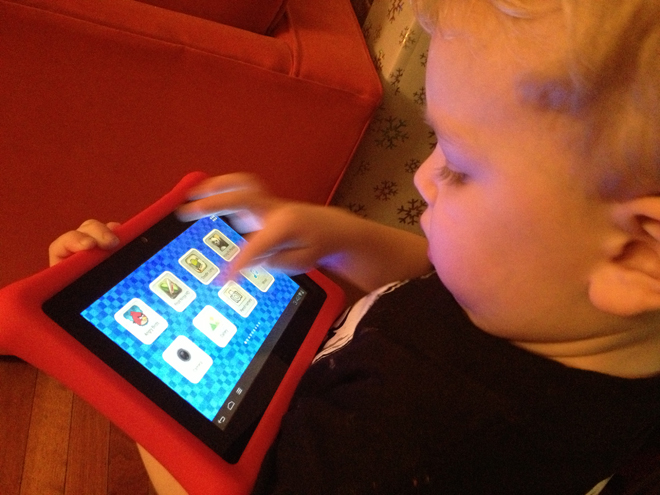Today’s lesson is inspired by and based on a 47-second video. (None of this will make much sense if you don’t watch it now.)
Why Does This Ad Work?
I wasn’t able to find any verifiable figures on how this particular device is selling (or how much can be attributed to this 2-week old commercial), but according to Inc. Magazine, the company that created Nabi, Fuhu, is the fastest growing privately-held company in America this year. With 42,148% growth over 3 years, they’re clearly doing something right.
Let’s go with what we know. This commercial is:
1) Laser-targeted. Fuhu knows precisely who the main buyers of these tablets are: parents (mostly mothers) of children in their Pre-K and early school years. This commercial makes its appeal directly to them. They’re not trying to win over any other audience. The commercial is running on channels where Mom, in full parenting mode, will be most receptive to the message.
2) Emotionally-driven. The video plays on the heartstrings — and does so mostly without words. It isn’t about tech specs; it’s not even about the device itself. The quick plot focuses on the triumphant end result: your child is fearless, unstoppable, even when her peers tremble.
3) Visually compelling. Again, the words are almost an afterthought here, although they do strengthen the visuals. But if you play the video again with the volume off, it has just as much punch. Video is powerful that way.
Viewers who don’t have kids can still appreciate the impact of the message.
Parents who see the commercial are deeply moved.
Parents with kids struggling academically…well they’ve probably already gone to buy the thing.
You can make your message visually compelling even if you’re not using video. Good copy can create the exact same effect in print or audio. Robert Collier said it well:
“The mind thinks in pictures, you know. One good illustration is worth a thousand words. But one clear picture built up in the reader’s mind by your words is worth a thousand drawings, for the reader colors that picture with his own imagination, which is more potent than all the brushes of all the world’s artists.”
Your Action Steps
1) Get to know your target audience. I sound like a broken record, but this point can’t be stressed enough. You can’t make a truly persuasive marketing message if you only have a vague idea who you’re talking to and what they care about. If you don’t get anything else from this newsletter, I’d make this the thing you pay attention to.
Your ideal client is like your spouse: you can never know her too well.
2) If you are intimately familiar with a promising audience, consider customizing a product or service for them. Fuhu saw a big opportunity to market kid-friendly, drop-proof tablets (you know you always cringe when your little one grabs your iPad with his slippery, slimy fingers). They went from $279,000 in revenue in ’09 to $118 million in 2012.
Maybe there are some 9-figure doors waiting for you to open them.
3) Add emotion to your messages. Aim for those heartstrings.
You’ve got a great product with all the bells and whistles. Who cares? Potential customers want to see their own triumphant end result. Paint that picture.
4) Make sure you have a good copywriter on your team.
5) Get your laser-focused, emotionally-charged message out in places where your best buyers will see them — and be in the right state of mind to listen attentively. Maybe it’s a radio ad during drive-time. Maybe it’s a snail mail letter from someone they trust. (That’s another one of those things you’ll have to figure out with study and testing.)

